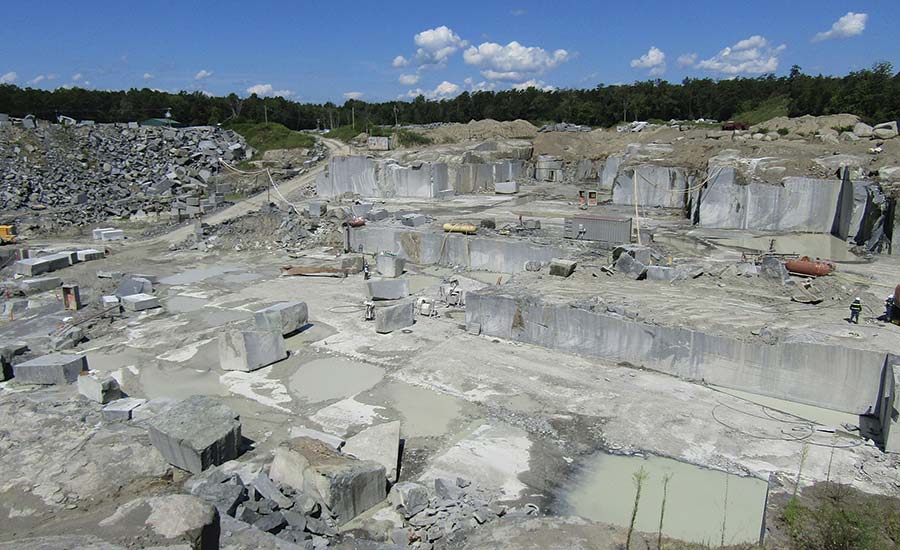Journeying Via Granite Quarries in South Africa: A Visual Odyssey
Journeying Via Granite Quarries in South Africa: A Visual Odyssey
Blog Article
Introducing the Mysteries of Granite Quarrying: Where Strength and Sophistication Meet
The world of granite quarrying is a realm where the raw strength of nature merges with human virtuosity to produce structures that stand the test of time with an air of sophistication. From the depths of quarries to the precise polishing in workshops, the procedure of transforming granite right into architectural wonders is a complex dancing of tradition and technology. As we peer right into the midsts of this old craft, we start to reveal the hidden intricacies that shape the really essence of our constructed environment.
The Origins of Granite Quarrying
In the annals of architectural history, the origins of granite quarrying are shrouded in a tapestry of old craftsmanship and geological marvels. Going back to old Egypt and Mesopotamia, the extraction of granite from quarries noted the beginning of a journey that would at some point result in the production of some of the world's most iconic frameworks.
Granite quarrying's roots can be traced to the knowledgeable artisans who identified the stone's longevity and aesthetic allure. With a combination of primitive tools and sheer decision, these very early quarry employees discovered granite blocks that would certainly end up being the building blocks of worlds.
As civilizations developed, so did the methods of quarrying granite. The Romans, renowned for their engineering expertise, developed innovative approaches for removing granite to construct monuments, holy places, and roadways that stood the examination of time.
The legacy of these ancient quarrying techniques proceeds to shape modern style, with granite staying a symbol of stamina and elegance in building tasks around the globe. (granite quarries in south africa)
Devices of the Quarrying Profession
The evolution of granite quarrying strategies from ancient civilizations to modern times highlights the critical role played by the tools of the quarrying trade in shaping the sector's techniques. In ancient times, quarrying tools were fundamental, often including blades, hammers, and wedges made from materials like bronze or iron. These devices needed considerable manpower and time to essence granite blocks from quarries.

Additionally, the intro of pneumatic tools and high-powered machinery has actually substantially lowered the physical labor required in quarrying operations, boosting employee safety and security and efficiency. As the quarrying industry remains to innovate, the tools of the profession stay at the leading edge of driving progress and shaping the future of granite removal.
Extracting Blocks of Granite
Using accuracy machinery and advanced methods, the removal of granite blocks from quarries has actually come to be an innovative procedure in the modern-day quarrying market. The first step entails determining the location and dimension of the granite down payment to figure out the most effective removal technique. Once an this article appropriate site is picked, the extraction procedure begins with the drilling of holes for the placement of explosives. Managed blowing up methods are after that utilized to damage apart the granite into manageable sections.

Sprucing Up and Completing Methods
To accomplish a perfect surface area on granite blocks, knowledgeable craftsmens use a series of meticulous sprucing up and ending up methods. After the preliminary removal and shaping processes, the granite obstructs undertake a complete sprucing up stage to boost their natural elegance and sturdiness. One common technique used in brightening granite is diamond abrasion, where commercial diamonds are used to grind and polish the stone to a smooth surface. This procedure not just develops a shiny surface area yet also makes certain harmony in color and texture across the granite block.
In addition to sprucing up, finishing techniques are applied to further refine the granite's look. By very carefully picking and using these polishing and ending up methods, craftsmens can transform raw granite blocks right into charming pieces that showcase both strength and style.

Ecological Effect and Sustainability
With the expanding focus on ecological consciousness in the industry, granite quarrying practices are increasingly scrutinized for their effect on all-natural resources and long-term sustainability. Quarrying for granite can have substantial environmental ramifications. The extraction process usually includes using hefty machinery, nitroglycerins, and big amounts of water, causing environment damage, soil disintegration, and water pollution. In addition, the transport of granite from quarries to refining centers produces carbon exhausts, additionally adding to environmental degradation. granite quarries in south africa.
To minimize these influences and guarantee sustainability in granite quarrying, market stakeholders are taking on numerous measures. Applying sophisticated innovations to minimize power consumption and water usage, reclaiming quarried land for environmental remediation, and promoting accountable sourcing practices are some methods being used. Moreover, qualifications such as the Forest Stewardship Council (FSC) and the Management in my blog Energy and Environmental Layout (LEED) help customers identify eco-friendly granite products.
Final Thought
In conclusion, granite quarrying is a process that needs specialized devices and methods to extract blocks of granite and polish them to a high level of coating. While the environmental effect of quarrying can be considerable, initiatives are being made to boost sustainability techniques in the market. In general, granite quarrying is a fragile equilibrium in between utilizing the stamina and sophistication of this natural stone while minimizing its influence on the atmosphere.
Report this page